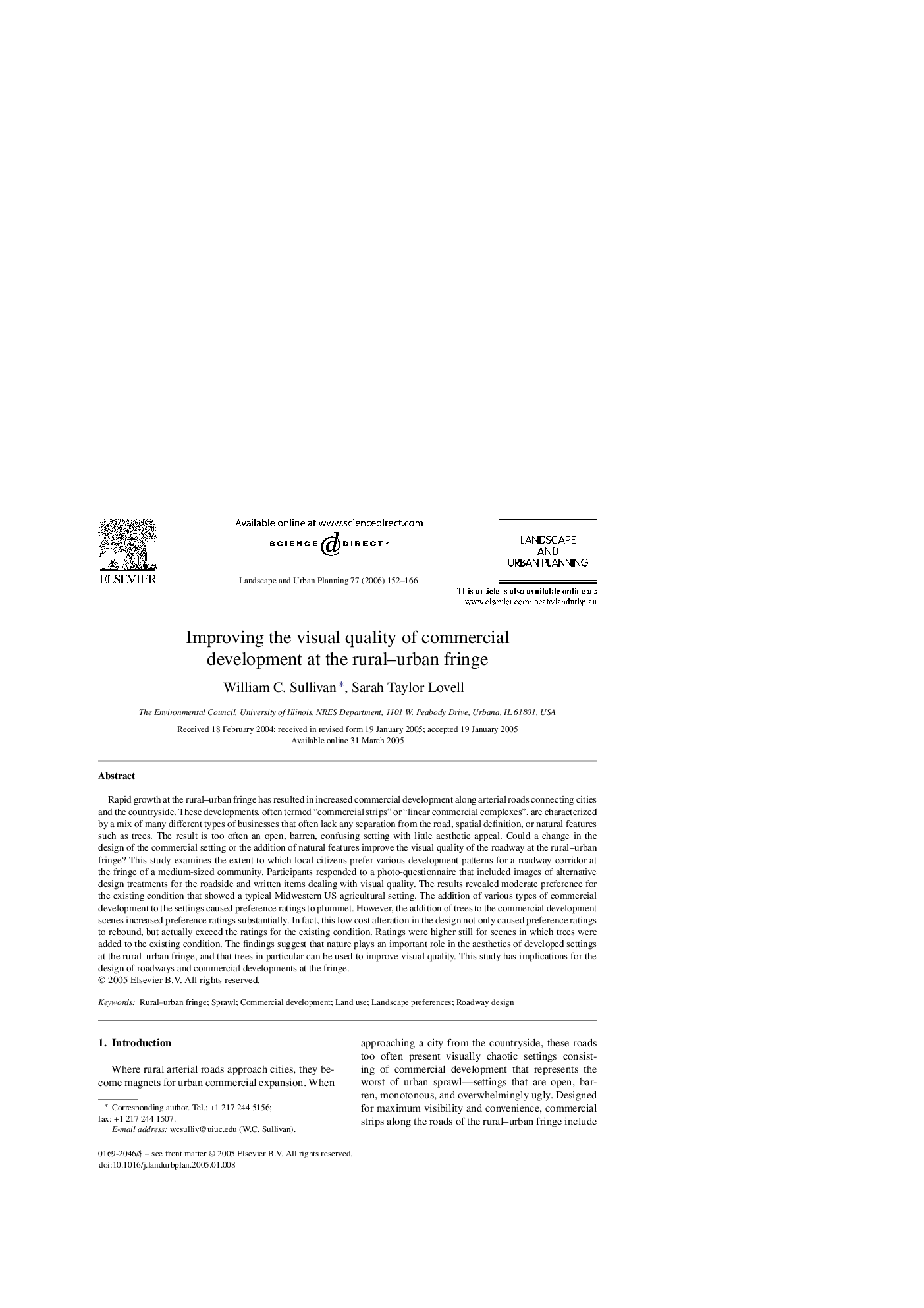| Article ID | Journal | Published Year | Pages | File Type |
|---|---|---|---|---|
| 1050188 | Landscape and Urban Planning | 2006 | 15 Pages |
Rapid growth at the rural–urban fringe has resulted in increased commercial development along arterial roads connecting cities and the countryside. These developments, often termed “commercial strips” or “linear commercial complexes”, are characterized by a mix of many different types of businesses that often lack any separation from the road, spatial definition, or natural features such as trees. The result is too often an open, barren, confusing setting with little aesthetic appeal. Could a change in the design of the commercial setting or the addition of natural features improve the visual quality of the roadway at the rural–urban fringe? This study examines the extent to which local citizens prefer various development patterns for a roadway corridor at the fringe of a medium-sized community. Participants responded to a photo-questionnaire that included images of alternative design treatments for the roadside and written items dealing with visual quality. The results revealed moderate preference for the existing condition that showed a typical Midwestern US agricultural setting. The addition of various types of commercial development to the settings caused preference ratings to plummet. However, the addition of trees to the commercial development scenes increased preference ratings substantially. In fact, this low cost alteration in the design not only caused preference ratings to rebound, but actually exceed the ratings for the existing condition. Ratings were higher still for scenes in which trees were added to the existing condition. The findings suggest that nature plays an important role in the aesthetics of developed settings at the rural–urban fringe, and that trees in particular can be used to improve visual quality. This study has implications for the design of roadways and commercial developments at the fringe.
